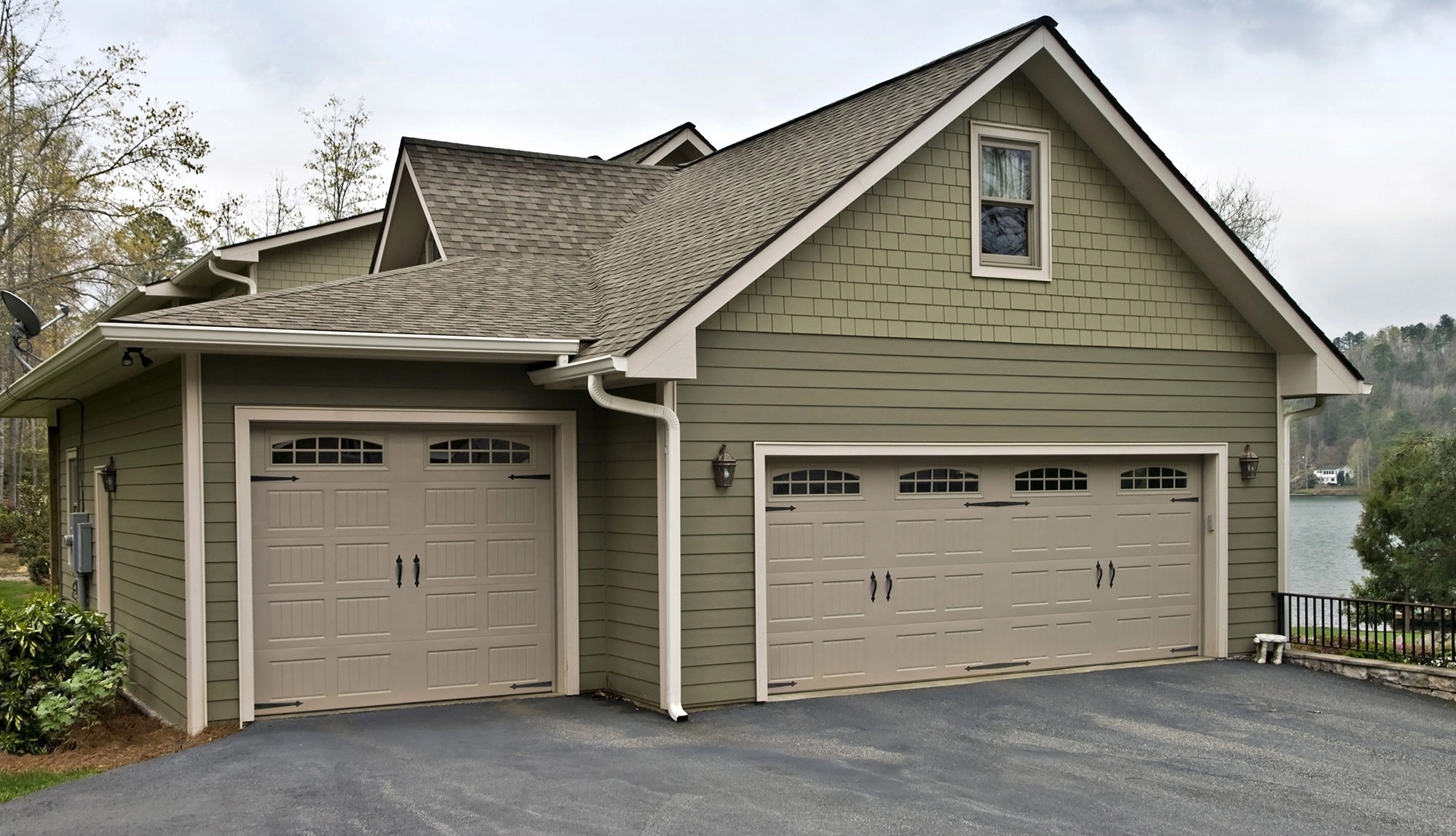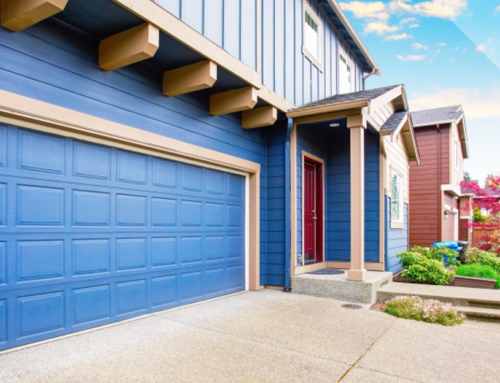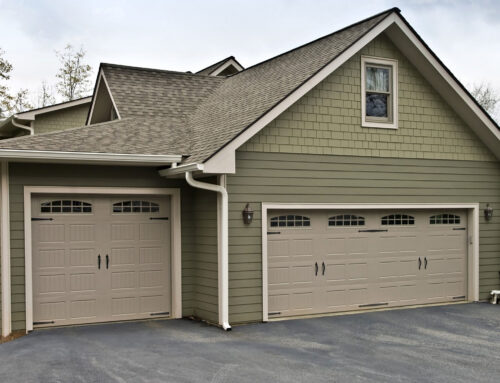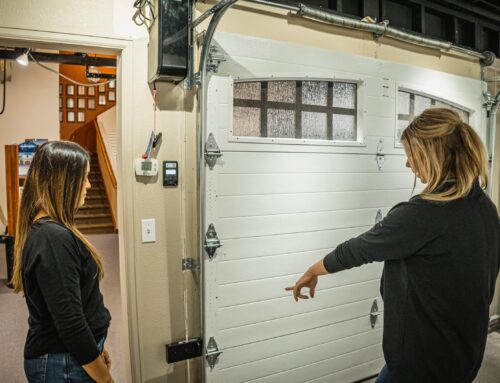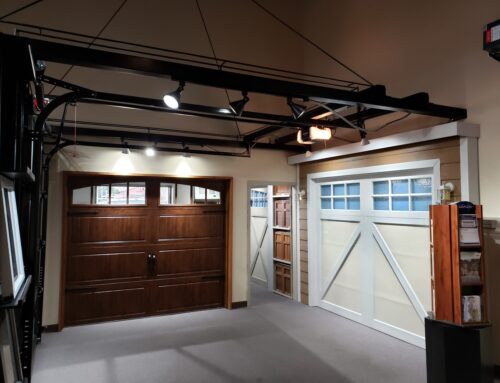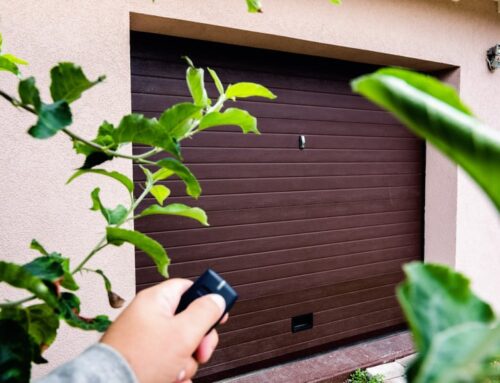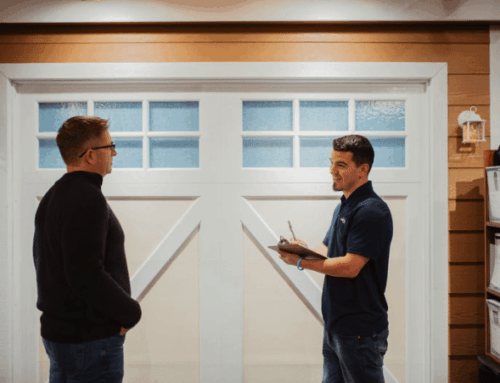When your garage door starts making strange noises, moves sluggishly, or stops working, you face an important decision: repair or replace? This choice affects your immediate budget and your home’s safety, energy efficiency, and property value. As garage door specialists serving Northern Colorado since 1987, we’ve helped thousands of homeowners navigate this decision.
Quick Answer
Should You Repair or Replace Your Garage Door? Quick Decision Guide
You should repair your garage door when the issue is isolated, like broken springs or damaged panels, the door is less than 10 years old, and meets current safety standards. Replacement is recommended when your door is over a certain age, has extensive damage, fails to meet modern safety codes, or you want to improve your home’s energy efficiency and curb appeal.
Understanding Your Garage Door’s Lifespan
How Long Does a Garage Door Last? Key Lifespan Factors
Most garage doors aren’t designed to last forever. Knowing typical lifespans helps put your repair-or-replace decision in context.
Age and Material Considerations
The average garage door lasts 15-30 years, depending on materials and maintenance. Steel doors typically last 15-20 years, while wood doors might need replacement after 15 years due to warping and rot in Colorado’s climate. Aluminum doors can last 20-25 years, but are more prone to denting.
Signs Your Door Needs Attention
Before deciding between repair and replacement, check for these warning signs:
- Unusual noises like grinding, scraping, or popping
- Slow or uneven movement
- Visible sagging when in the horizontal position
- Gaps around the edges when closed
- Increasing energy bills, possibly from poor insulation
- Cosmetic damage affecting curb appeal
These symptoms don’t automatically mean replacement is necessary, but they signal the need for a professional assessment.
When Repair Makes Sense
Is Repair a Good Option for Your Garage Door?
Certain problems are better suited for repair rather than full replacement:
Spring System Issues: Broken torsion or extension springs are among the most common garage door problems. While they are dangerous to fix yourself because they store enormous energy, professional replacement varies in cost and restores full functionality.
Opener Malfunctions: If your door moves manually but the opener fails, replacing just the opener unit makes sense. Modern openers offer improved security and convenience and cost much less than a full door replacement.
Panel Damage: Replacement panels can be ordered and installed for sectional doors with one or two damaged panels if the door model is still in production. This preserves your investment while fixing the damage.
Cost-Benefit Analysis for Repairs
When evaluating repair costs, consider this guideline: if repairs exceed 50% of replacement costs and your door is over 10 years old, replacement often provides better long-term value.
Even significant repairs may be justified for newer doors. A 5-year-old insulated steel door might cost thousands to replace, making a $600 repair economically sensible, especially when the repair includes warranty coverage on parts and labor.
When Replacement Becomes Necessary
Safety and Compliance Issues
Safety should always be your top concern when evaluating your garage door system.
Outdated Safety Features: Garage door openers made before 1993 lack federally mandated safety reversal mechanisms. If your system lacks photoelectric sensors that prevent the door from closing when obstructions are detected, replacement is strongly recommended.
Structural Integrity Concerns: Doors showing more than 0.5″ panel deflection or failing to meet these standards pose a safety risk during severe weather.
Energy Efficiency Considerations
Your garage door is one of the largest openings in your home’s exterior, significantly affecting energy efficiency.
Uninsulated garage doors are a primary source of thermal leakage. Older models show U-factors of 1.2 W/m²·K or higher compared to 0.3-0.6 for modern polyurethane-core doors. This difference leads to noticeable heating and cooling costs, especially for attached garages.
Retrofitting insulation to existing doors rarely matches this performance because air leaks at panel joints account for high amounts of energy loss. New insulated doors with thermal breaks and weathersealing provide superior performance that aftermarket solutions can’t match.
The Economic Case for Replacement
Beyond immediate costs, consider these economic factors:
Return on Investment: Garage door replacement consistently ranks among the highest ROI home improvements. Recent data shows a high cost recovery at resale, making it one of the smartest home upgrades.
Ongoing Maintenance Costs: As doors age, repairs become more frequent. Components like rollers, cables, and hinges wear out, creating a continuous maintenance cycle. New doors usually come with warranties on materials and some on labor, reducing maintenance expenses.
Insurance Considerations: In areas prone to severe weather, insurers may offer premium discounts for doors meeting current wind-resistance standards.
Making Your Decision: A Practical Framework
To help you decide between repair and replacement, consider this four-factor framework:
1. Structural Assessment
Have a professional evaluate your door’s structural integrity. Doors failing pressure tests or showing significant panel deflection should be replaced rather than repaired. This is especially important in Colorado, where high winds considerably stress garage doors.
2. Safety Compliance Check
Make sure your door opener includes both photoelectric sensors and contact reversal mechanisms. Systems lacking these features should be replaced regardless of age or condition.
3. Energy Performance Evaluation
Measure temperature differences between your garage and adjacent living spaces for attached garages. A modern insulated replacement could save significant energy if your garage experiences extreme temperature swings or you notice drafts around the door.
4. Cost-Benefit Calculation
Compare repair quotes against replacement options, factoring in:
- Age of the existing door
- Frequency of past repairs
- Energy savings potential
- Warranty coverage
- Home value impact
For doors older than 15 years, even minor repairs often lead to more issues as other components reach end-of-life simultaneously
Professional Assessment: The Critical First Step
While this guide provides a decision-making framework, nothing replaces a professional assessment. Our technicians conduct comprehensive evaluations, including:
- Full safety inspection of all mechanical components
- Operational testing of safety features
- Structural integrity assessment
- Energy efficiency analysis
- Detailed cost comparison between repair and replacement options
This evaluation helps you make an informed decision based on your situation rather than general guidelines.
Conclusion: Balancing Immediate Needs with Long-Term Value
The repair-or-replace decision comes down to balancing immediate budget constraints against long-term value. For doors under a certain age with isolated issues, repair usually makes sense. For older doors with multiple problems, replacement often provides better safety, efficiency, and economic outcomes.
Remember that your garage door operates about 1,500 times yearly, contains the largest moving components in your home, and significantly impacts curb appeal and energy efficiency. Whether you choose repair or replacement, working with qualified professionals ensures the job is done right.
When you’re ready for an expert assessment of your garage door situation, our team is here to help with honest recommendations based on your needs, not sales pressure. We’ve been serving Northern Colorado homeowners since 1987 with the same approach: listen first, understand your needs, and provide solutions that make sense for your home and budget.

